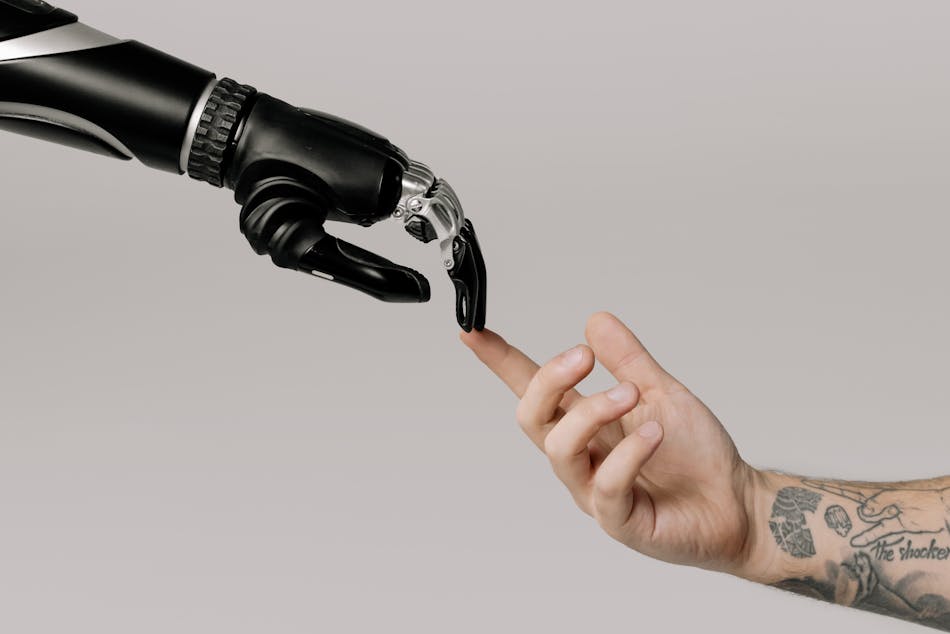In today’s rapidly evolving workplace, artificial intelligence in workforce management is no longer a futuristic concept—it’s a game changer that’s shaping how organizations operate. From automating routine tasks to providing data-driven insights, AI has revolutionized how businesses manage their most valuable asset: their people.
For industries like IT services, professional services, and software development, the implementation of AI workforce management tools offers unprecedented opportunities to enhance efficiency, streamline operations, and improve employee satisfaction. But what does this mean for the future of work?
This blog explores how AI in workforce management is transforming the way teams operate, the benefits it brings, and the challenges it presents. Whether you’re an HR leader navigating a hybrid work environment or a workforce analyst seeking to optimize scheduling, understanding the impact of AI is crucial to staying ahead in a competitive landscape.
How AI is Transforming Workforce Management
The integration of AI workforce solutions into workforce management has introduced transformative changes across various sectors, especially in industries like IT, HR, professional services, and customer support. In HR for example, AI-enablement within people management systems like SenseHR or Personio simplify the creation of important HR documents – think contracts or policies – by generating templates that incorporate personalization tags. These types of automation leverage artificial intelligence to help businesses eliminate repetitive tasks, increase accuracy, enhance decision-making, and improving workforce engagement holistically.
-
Automated Task Management
One of the primary benefits of artificial intelligence in workforce management is the automation of routine administrative tasks. Processes like employee scheduling, timesheet approvals, and shift adjustments can now be handled by AI tools, reducing errors and saving countless hours for managers.
-
Enhanced Decision-Making
AI-driven analytics provide insights that were previously hard to uncover. Predictive algorithms can forecast staffing needs, identify skill gaps, and even suggest optimal team compositions. These insights empower leaders to make data-informed decisions that benefit both employees and the organization.
-
Improved Employee Engagement
The use of AI workforce management systems fosters a better work environment by personalizing employee experiences. AI can analyze feedback, track performance trends, and recommend professional development opportunities, helping employees feel valued and supported.
-
Flexibility in Workforce Planning
Especially critical in IT and hybrid workplaces, AI workforce IT tools enable businesses to manage flexible schedules and remote teams effectively. AI systems can predict project requirements and allocate resources accordingly, ensuring teams remain productive without overworking.
By addressing these key areas, AI is not just optimizing workforce operations but also paving the way for a more adaptable and resilient workforce.

Benefits and Challenges of AI in Workforce Management
The adoption of AI in workforce management offers numerous advantages, but it also comes with its fair share of challenges. Organizations looking to integrate AI must weigh these factors carefully to maximize its potential while addressing potential pitfalls.
Benefits of AI in Workforce Management
-
Increased Efficiency
One of the most significant advantages of AI is its ability to automate routine and repetitive tasks. Processes like scheduling, payroll management, and employee time tracking can be handled seamlessly, reducing administrative burdens on HR teams. For example, AI-driven tools can quickly generate optimized schedules based on employee availability and business needs, saving countless hours that would otherwise be spent on manual planning.
-
Cost Savings
By optimizing resource allocation and streamlining processes, AI workforce management tools help businesses reduce costs. Predictive analytics can identify areas of overstaffing or inefficiency, allowing organizations to make data-driven adjustments that save money without compromising productivity.
-
Enhanced Scalability
AI systems enable organizations to scale their workforce operations effortlessly. Whether managing a growing remote team or expanding to new markets, AI tools can handle increasing complexity without requiring a proportional increase in human effort. For instance, AI-powered chatbots can provide 24/7 HR support to employees across different time zones.
-
Personalized Employee Experiences
AI improves employee satisfaction by delivering tailored experiences. From analyzing performance trends to recommending training programs, AI tools help managers better understand individual employee needs. Personalized career development plans and well-timed recognition for achievements foster a more engaged and motivated workforce.
Challenges of AI in Workforce Management
Data Privacy Concerns
The use of AI workforce tools requires access to large volumes of employee data. This raises concerns about privacy and the ethical use of sensitive information. Organizations must ensure that their AI systems comply with data protection regulations like GDPR or CCPA and implement robust security measures to prevent breaches.
Implementation Costs
While AI offers long-term cost benefits, the initial investment can be high. Businesses need to budget for software acquisition, system integration, employee training, and ongoing maintenance. These costs may deter smaller organizations from adopting AI solutions.
Workforce Resistance
The introduction of AI can create apprehension among employees, who may fear that automation will replace their jobs or lead to micromanagement. To address these concerns, leaders must communicate the purpose of AI implementation clearly and involve employees in the transition process, emphasizing how AI complements rather than replaces human roles.
Dependence on Data Quality
AI systems are only as effective as the data they are built on. Inaccurate or incomplete workforce data can lead to flawed predictions and decisions. Businesses must invest in robust data management practices to ensure the reliability of their AI-powered tools.
By understanding these benefits and challenges, organizations can develop strategies to leverage the full potential of artificial intelligence in workforce management while mitigating risks.

Preparing Your Organization for AI Integration
Integrating AI into workforce management requires thoughtful planning. Here are key steps to prepare:
1. Start Small
Test AI tools in specific areas like shift scheduling or feedback analysis. Small-scale pilots identify issues before scaling.
2. Upskill Employees
Train employees to use AI tools and develop data literacy. This helps build confidence and ensures smooth transitions.
3. Form a Cross-Functional Team
Involve IT, HR, data analysts, and team leaders. Collaboration ensures AI aligns with goals and meets user needs.
4. Communicate Benefits
Address concerns by explaining how AI enhances jobs rather than replacing them. Highlight its potential to reduce workloads and improve productivity.
5. Prepare Data Systems
Audit workforce data for accuracy. Implement policies to maintain consistency and comply with privacy standards.
6. Monitor and Optimize
Evaluate AI tools regularly. Use feedback to identify improvements and ensure long-term success.
With careful planning, organizations can unlock the full potential of AI workforce management tools while minimizing challenges.
Advanced AI Capabilities Transforming Workforce Management
AI technologies not only improve efficiency but also enable organizations to take a more proactive and strategic approach to workforce management. Here are some advanced capabilities driving innovation:
1. Predictive Analytics for Workforce Needs
AI can forecast future workforce demands by analyzing historical patterns. This enables organizations to proactively adjust staffing levels, ensuring they are prepared for seasonal fluctuations or sudden changes in customer demand.
2. AI-Driven Skill Gap Analysis
AI evaluates employee performance across multiple data points, identifying areas where skill gaps exist. By detecting these gaps, businesses can tailor their training programs, providing employees with the specific skills they need to succeed and enhancing overall workforce capabilities.
3. Improved Resource Allocation
AI tools analyze workforce and operational data to optimize resource distribution. By identifying where resources are underused or overused, AI helps organizations make smarter decisions, ensuring the right resources are allocated efficiently, reducing costs and improving productivity.
4. AI for Real-Time Issue Resolution
AI systems continuously monitor workforce activities, identifying inefficiencies or potential issues as they arise. For instance, if an employee repeatedly misses shifts or fails to meet performance targets, AI can alert managers, enabling timely interventions to resolve the issue and maintain smooth operations.
5. Improved Employee Satisfaction with Personalized Experiences
AI enhances the employee experience by offering personalized work schedules, development opportunities, and even benefits recommendations based on individual performance and preferences. This personalized approach boosts engagement and overall job satisfaction, leading to higher retention rates.
Summary
Artificial Intelligence is reshaping workforce management by offering innovative solutions that improve efficiency, enhance employee engagement, and optimize decision-making. AI is revolutionizing workforce scheduling, allowing businesses to create data-driven, optimized schedules while eliminating manual errors. With centralized AI-powered dashboards, managers can monitor key performance indicators in real-time, identify trends, and make informed decisions.
AI also plays a crucial role in employee engagement and retention, providing personalized assistance through chatbots and automating routine tasks, freeing employees to focus on more meaningful work. Performance management is another area where AI shines, offering objective, data-driven insights into employee performance and identifying development opportunities.
The introduction of AI-powered reporting tools enhances decision-making by providing actionable insights, predicting future workforce needs, and addressing potential gaps or issues proactively.
In addition, advanced AI capabilities like predictive analytics, skill gap analysis, and real-time monitoring further elevate workforce management, optimizing resource allocation and personalizing the employee experience. These transformative AI tools are not only increasing operational efficiency but also creating a more engaged and productive workforce.



